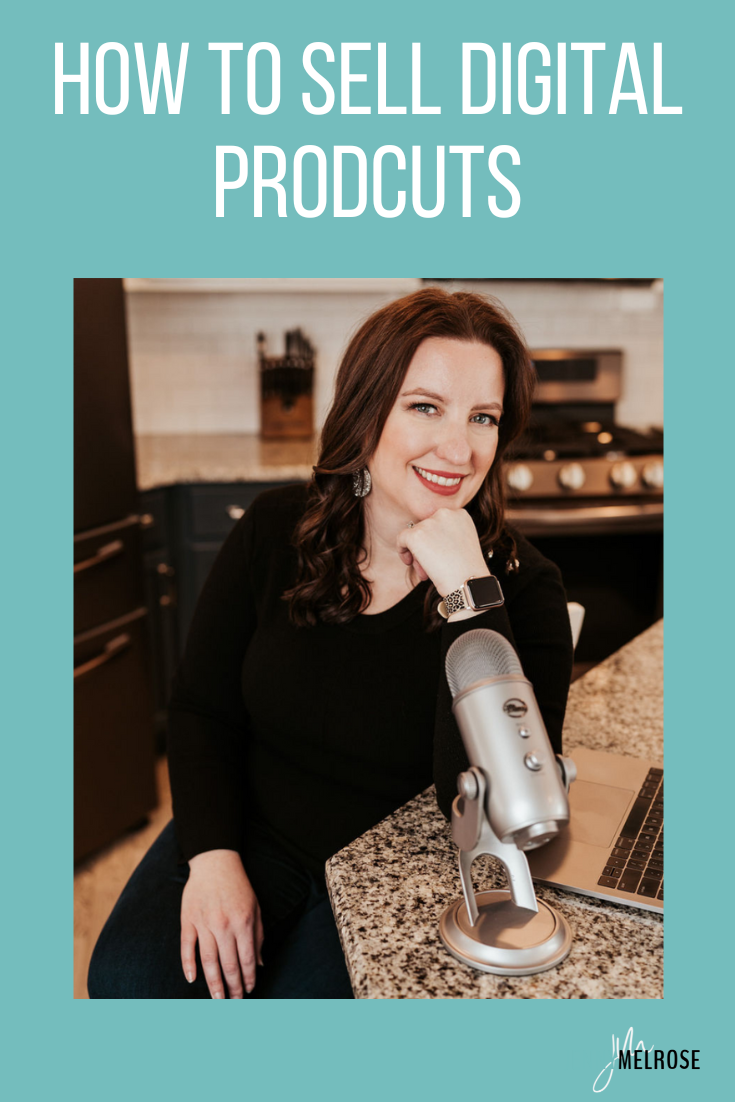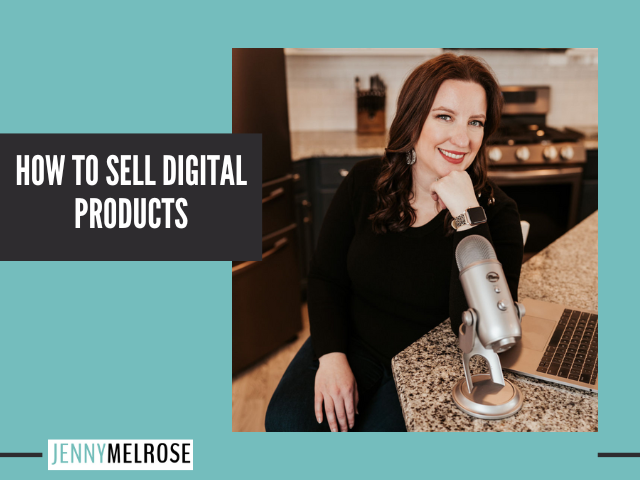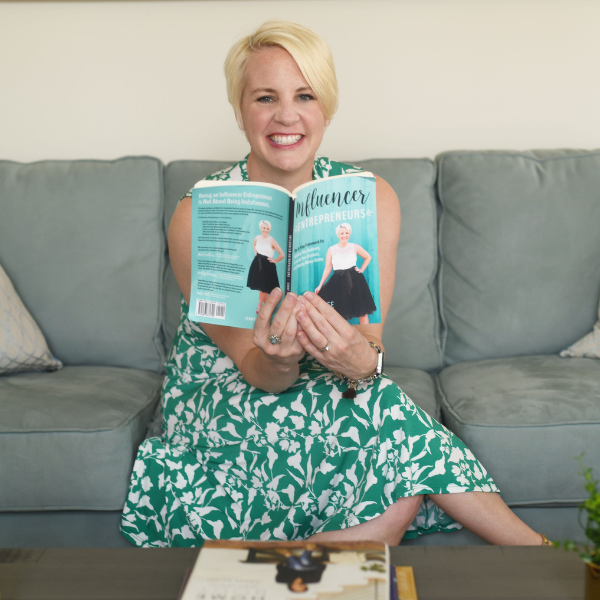Selling your own digital products is one of the most profitable ways to monetize your blogging business, which is why we’re diving into how to sell digital products.
IE 317: How to Sell Digital Products with Monica Froese

Our guest’s name today is Monica Froese, Monica got started as a mom blogger with a blog called Redefining Mom, which basically takes you through her postpartum journey.
That’s where Monica launched her first digital product that she still sells today, it’s a family budget spreadsheet.
Once Monica quit her full-time job, she branched off there and had a few little things that happened.
The main thing being where a lot of people got to know her through a course on Pinterest advertising which she did for four years.
In 2020 Monica decided she couldn’t stand having a business depend on another person’s business.
She came to the conclusion that what she’s really good at is developing digital products, so that led her to launch the brand empowered business where they have a core offer and teaching how to create and launch your core digital products that focuses on sales funnels.
Why should bloggers create a digital product if they already don’t have one?
Monica comes from a corporate marketing background, she worked for a big Fortune 100 and ran large scale marketing campaigns for big brands.
When you run a marketing campaign you can’t go back to the brand and be like “I can’t show you what my return investment is”.
You spent a million dollars but you have no idea what that million dollars went to or what you got out of it.
Whereas with blogging, in corporate, you blog but it’s called content marketing and the whole purpose of putting out any free content is to lead to the thing that you’re selling.
They’re just trying to get traffic but not understanding what purpose it’s serving, then they start getting traffic and they’re like “woah I have to monetize because this is a lot of work.”
So they slap up these display ads and now they’re spending all this time getting people to them and then having them click to other people’s businesses for pennies.
It totally ruins the user experience and at the end of the day, this blogging model was developed.
The bloggers actually owning any of their revenue sources or their customer relationships.
They got so good at attracting people and sending people away and that is a lot of work to do to bring people to you just to not keep them in your world .
What are some examples of digital products that sell?
Bloggers in general do resonate with the lower price digital products, they can wrap their head around that a lot easier than what the heck would I charge?
Whether they can or can not is irrelevant but lower price products do resonate more because if you have high traffic, lower price products you can do volume with.
If you’re going to a consumer market they’re palatable for an entry level, like people getting into your world.
There are these things called usability tools, some people will call them downloadable digital products.
Which usually are along the lines of overlays, e-books, printables, digital templates, and digital courses.
Then there are topics such as supplements like PDF’s or audios, visual things.
Or if your topic is subject to change and you’re constantly updating it, a course is good for that.
Digital products are a great way to add a side hustle to what you already talk about within your content.
What do you need in order to sell a digital product?
You need somewhere for them to land, and if you’re a blogger you already have that because you have a website.
So you know how to put content and a page on the internet so they have to land somewhere.
Then you need somewhere for them to check out and that’s not just slapping a PayPal button on it.
You really need an ecommerce solution, so for funnels, if it’s a sales funnel Monica uses Sendo.
Now she’s standardized on Thrive Cart, which Monica thinks has way more robust capabilities.
On Sendo you can’t modify the checkout and the checkout page is one of the important pieces to optimize for conversions to getting that sale.
Thrive Cart allows you to drag and drop all of that.
That’s how you’re going to deliver and it triggers everything and then you need an email service provider because you have to collect the email and be regularly communicating with your people.
Sales funnels are meant to attract people to you that don’t know anything about you because it’s a hyper-specific buying journey.
They don’t have choices on the buying journey, they land on the page and they make a decision.
You’re dictating the decisions that they’re making because you don’t want to overwhelm them, it builds a trust factor.
The first thing we learned is that it’s cheaper to sell to a current customer than to acquire a new customer.
So a lot of the time we can relate to bloggers because we get so focused on sales funnels, just like bloggers get so focused on getting more page views.
We lose sight of what we’re doing with all of these people we’ve already attracted to us because they’re already there.
What is more important, a sales page or a sales funnel?
Back in the day when Monica launched her first digital product, some very unfortunate things happened.
It can send you loads of traffic, so there she was getting tens of thousands of views on this sales page and what she started to notice was that these people don’t know her so they started dropping off.
And because it was a dedicated sales page, they weren’t going anywhere else on her site to get to know her.
So it was like they either decided to spend $17 with her or not and then they were gone.
Once she got indexed on that page she decided she had to do something different, so this is where her triple dip was born from.
Basically, she has all of these people just dropping and she has no way to recapture them, yes she had pixels and could retarget ads but that’s pretty costly.
There has to be a better way than that, so at the very bottom of the sales page, she was driving cold traffic, so they didn’t know her.
This isn’t where she would send her warm people because they’re already warm, they’re already on her list, they don’t need this at the bottom of the page.
She would say “well don’t leave empty-handed, get her x, y, z”, whatever her opt-in would be.
The first part of the triple dip is okay, I want your money, you’re on my sales page, I want your money, please buy what I’m offering.
Oh you’re not ready yet?
The second part is okay, well I at least want your email address right, because I want to continue talking to you and naturally, after they hand over their email.
This is where a lot of people over the years are like “woah it would and I’ve done it on so many products”.
She’d send them directly to a trip wire that’s for that initial product that they weren’t totally sure on yet, but took her opportunity at the freebie and then offered it on a trip wire for 20 minutes.
At the end of the day you just care about the ability to communicate with your customers in the future.
You’re good at selling once you get them on your email list, so that’s the main priority if you can’t get that initial sale/
But when they go to the tripwire page it ‘s like “oh well this is a no brainer, I obviously should take it”.
Monica offers a workshop called Profit Transformation, she does it live every 45 days and that’s where she walks through how to add $5,000 a month revenue using a digital product.
She finds that when you show people the math it really blows their mind because there’s two numbers that you have to care about and that can make a dramatic difference, which is your average cart value and the percentage of people that you convert.
Action Steps:
- If you liked this episode of Influencer Entrepreneurs, please subscribe and leave a fabulous review!
- Join the conversation on Instagram by tagging Jenny when you’re listening to the podcast. She’ll send you a personal message whenever you tag her.


